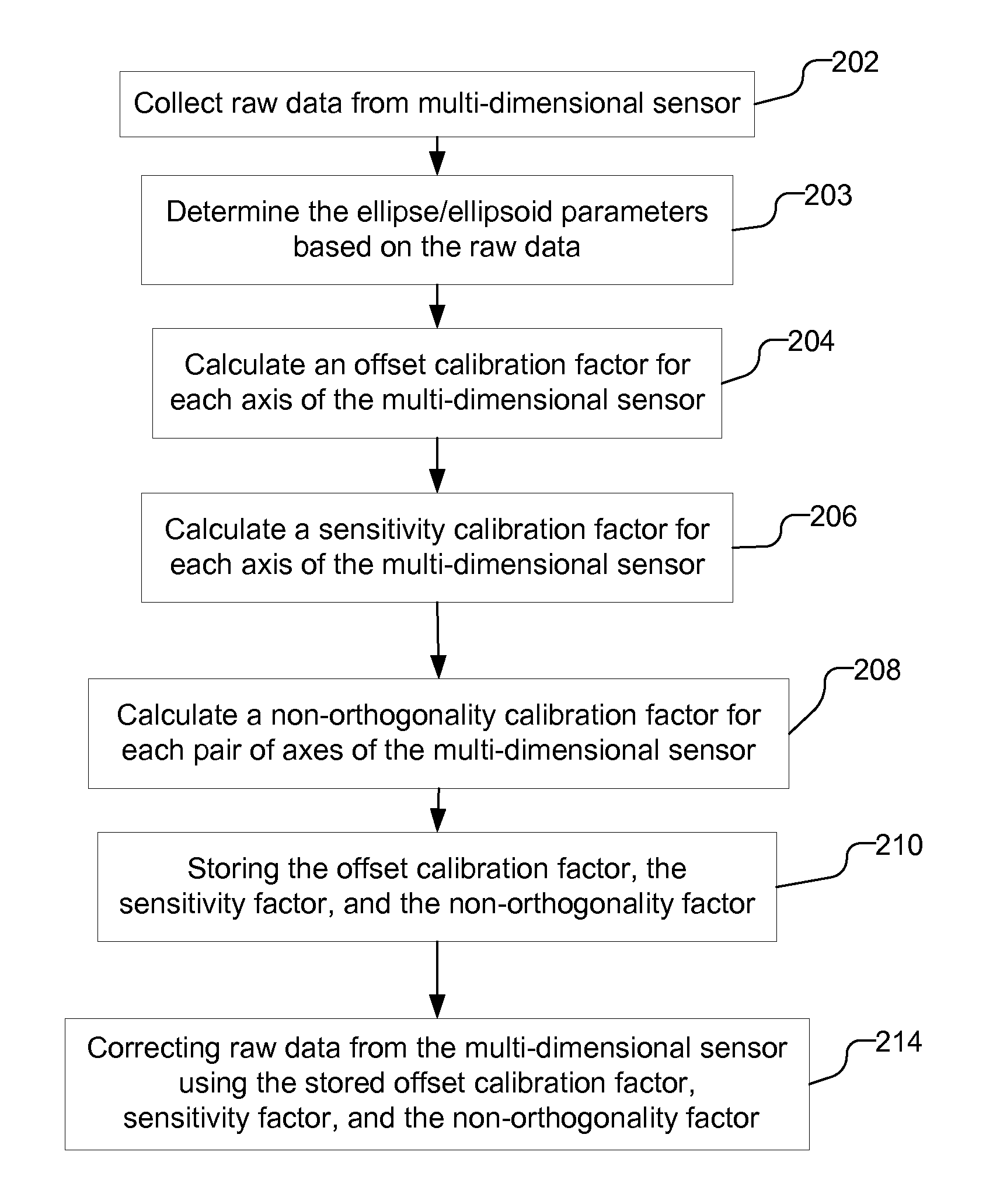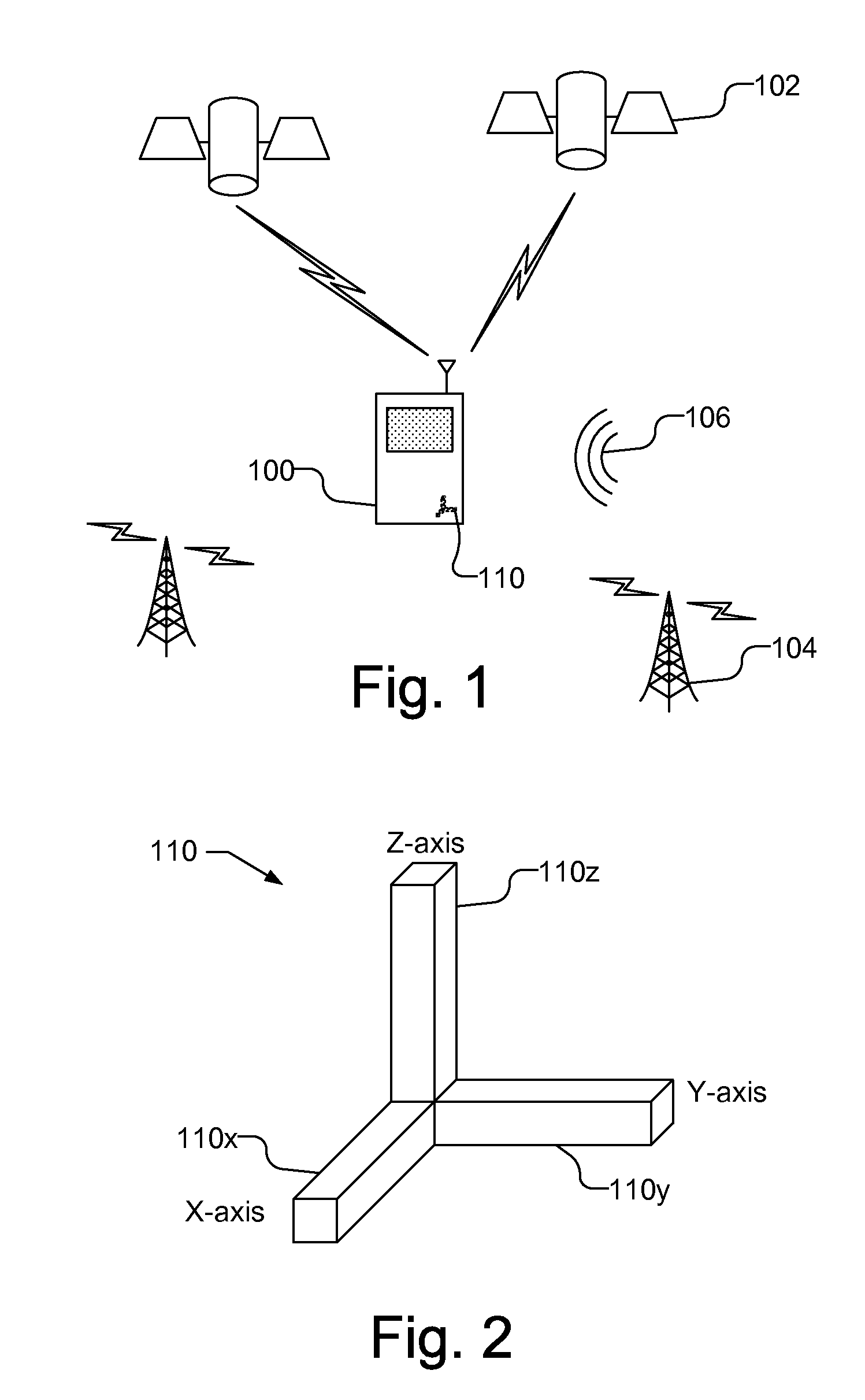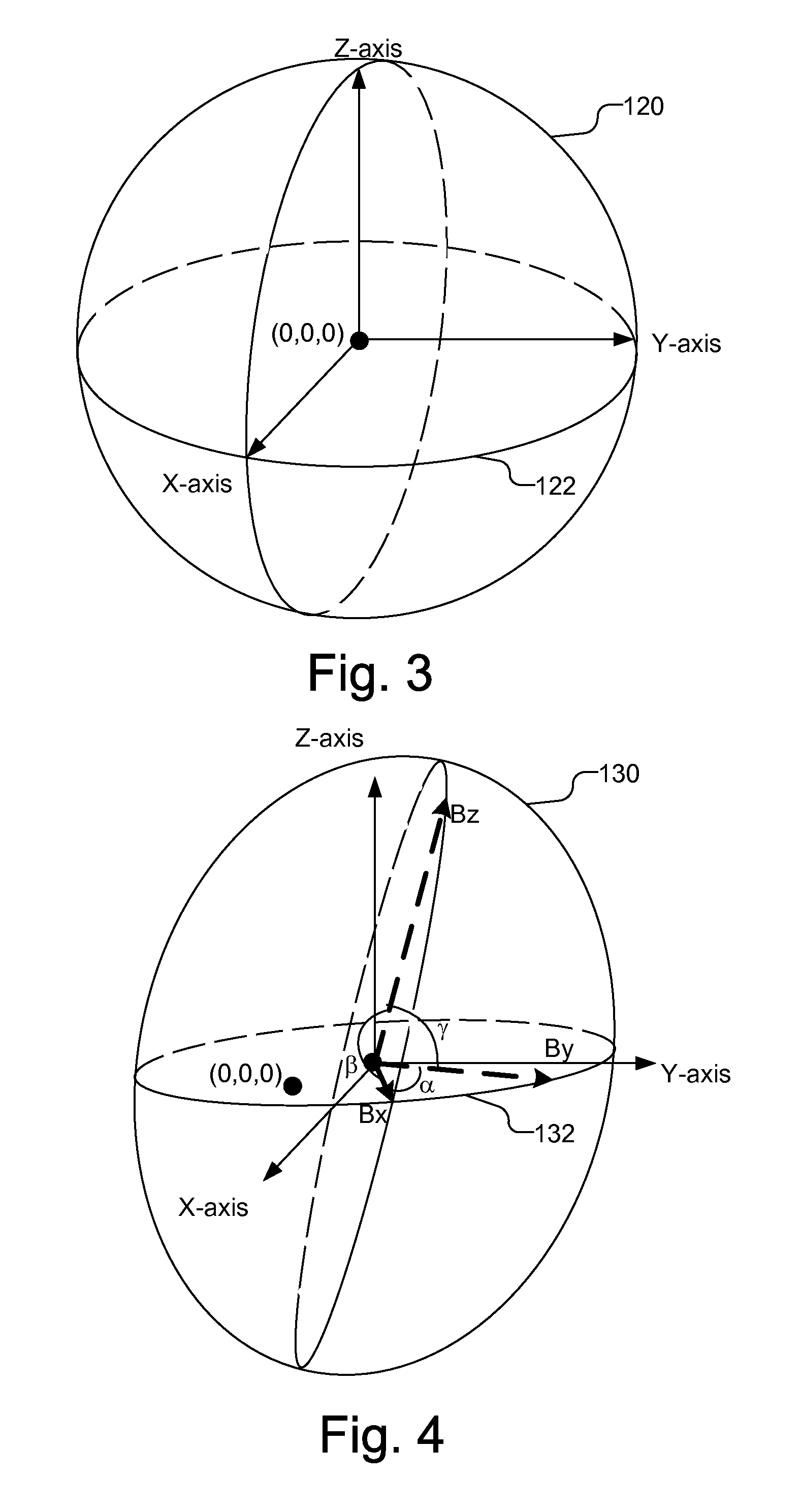Calibrating multi-dimensional sensor for offset, sensitivity, and non-orthogonality
a multi-dimensional sensor and offset technology, applied in liquid/fluent solid measurement, three-component magnetometers, instruments, etc., can solve the problems of high cost, low power consumption, and the inability to factory calibrate multi-dimensional sensors individually
- Summary
- Abstract
- Description
- Claims
- Application Information
AI Technical Summary
Problems solved by technology
Method used
Image
Examples
Embodiment Construction
[0012]FIG. 1 illustrates a mobile station 100 that performs an auto-calibration of a multi-dimensional sensor 110, which may be used to assist in navigation and / or orientation of the mobile station 100. The multi-dimensional sensor 110 may be, e.g., a two-dimensional or a three-dimensional sensor, and may be, e.g., a magnetometer that measures the Earth's magnetic field or an accelerometer that measures acceleration on the mobile station 100. The offset, sensitivity and non-orthogonality of the multi-dimensional sensor 110 are calibrated based on the raw data provided by the multi-dimensional sensor 110 while the sensor is in use.
[0013]As used herein, a mobile station (MS) refers to a device such as a cellular or other wireless communication device, personal communication system (PCS) device, personal navigation device (PND), Personal Information Manager (PIM), Personal Digital Assistant (PDA), laptop or other suitable mobile device which is capable of receiving wireless communicati...
PUM
 Login to View More
Login to View More Abstract
Description
Claims
Application Information
 Login to View More
Login to View More - R&D
- Intellectual Property
- Life Sciences
- Materials
- Tech Scout
- Unparalleled Data Quality
- Higher Quality Content
- 60% Fewer Hallucinations
Browse by: Latest US Patents, China's latest patents, Technical Efficacy Thesaurus, Application Domain, Technology Topic, Popular Technical Reports.
© 2025 PatSnap. All rights reserved.Legal|Privacy policy|Modern Slavery Act Transparency Statement|Sitemap|About US| Contact US: help@patsnap.com



